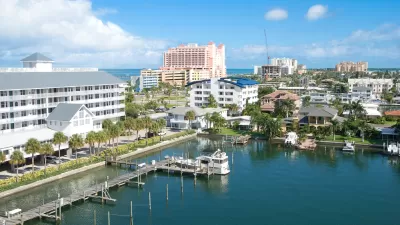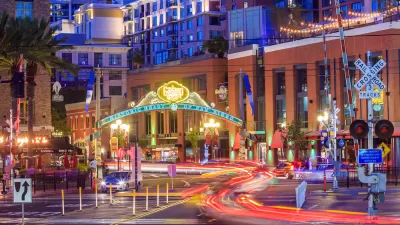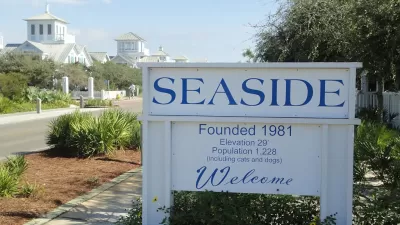Following an ill-fated foreclosure in 2009, a residential project in Libertyville, IL finally finds its way while demonstrating the potential for an emerging field of redevelopment, reports Ann Dillemuth.
The community of SchoolStreet, a four-acre residential project in the Village of Libertyville, Illinois, may be paving the way for a new model of infill development. Dubbed redfields, large plots of foreclosed homes ("in the red") offer a cost-effective and community-friendly solution for neighborhoods devastated by the housing market crash.
Identified for an adaptive reuse development nearly forty years ago, the original project gained momentum in 2007 when developers began construction on 31 luxury brownstones around the long-vacant Libertyville Central School building. When the bank foreclosed on the properties in 2009, the project's future looked grim.
"John Spoden, AICP, Libertyville's community development director, braced himself for proposals to tear the historic building down and increase the height and density of new construction – conventional responses to making development work in tough markets and on infill sites," writes Dillemuth.
But the development potential piqued the interest of John McLinden, a developer who had already had success with residential infill projects in nearby Chicago. Working closely with the community development department, the mayor, and the community, McLinden forged a plan for a new urbanist community that has drawn thousands of visitors and considerable media attention.
By taking advantage of a foreclosed property, McLinden was able to offer units at 56% of the asking price of the brownstones planned in 2007.
SchoolStreet was the subject of a recent Tuesdays at APA podcast.
FULL STORY: Redeveloping "Redfields": New Life for Foreclosed Properties

Maui's Vacation Rental Debate Turns Ugly
Verbal attacks, misinformation campaigns and fistfights plague a high-stakes debate to convert thousands of vacation rentals into long-term housing.

Planetizen Federal Action Tracker
A weekly monitor of how Trump’s orders and actions are impacting planners and planning in America.

San Francisco Suspends Traffic Calming Amidst Record Deaths
Citing “a challenging fiscal landscape,” the city will cease the program on the heels of 42 traffic deaths, including 24 pedestrians.

Defunct Pittsburgh Power Plant to Become Residential Tower
A decommissioned steam heat plant will be redeveloped into almost 100 affordable housing units.

Trump Prompts Restructuring of Transportation Research Board in “Unprecedented Overreach”
The TRB has eliminated more than half of its committees including those focused on climate, equity, and cities.

Amtrak Rolls Out New Orleans to Alabama “Mardi Gras” Train
The new service will operate morning and evening departures between Mobile and New Orleans.
Urban Design for Planners 1: Software Tools
This six-course series explores essential urban design concepts using open source software and equips planners with the tools they need to participate fully in the urban design process.
Planning for Universal Design
Learn the tools for implementing Universal Design in planning regulations.
Heyer Gruel & Associates PA
JM Goldson LLC
Custer County Colorado
City of Camden Redevelopment Agency
City of Astoria
Transportation Research & Education Center (TREC) at Portland State University
Jefferson Parish Government
Camden Redevelopment Agency
City of Claremont





























